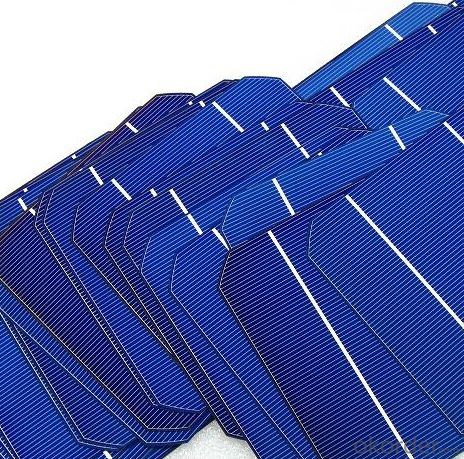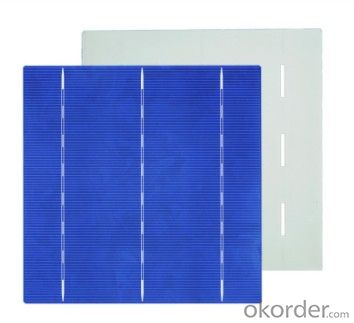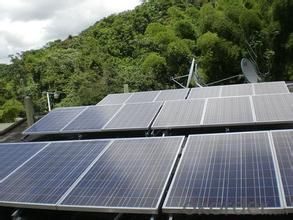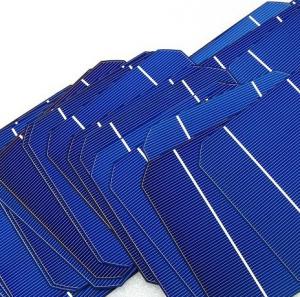Polycrystalline Solar Cells with 3bb A Grace17.8 Efficiency
- Loading Port:
- Shanghai
- Payment Terms:
- TT or LC
- Min Order Qty:
- 10000 watt
- Supply Capability:
- 5000000 watt/month
OKorder Service Pledge
OKorder Financial Service
You Might Also Like
Brief Introduction of Solar Cells
A solar cell, is an electrical device that converts the energy of light directly into electricity by the photovoltaic effect, which is a physical and chemical phenomenon. It is a form of photoelectric cell, defined as a device whose electrical characteristics, such as current, voltage, or resistance, vary when exposed to light. Solar cells are the building blocks of photovoltaic modules, otherwise known as solar panels.
Advantage of Polycrystalline Solar Cells
World’s Leading Manufacturer Equipment. We imported the newest and leading production equipment from abroad. Advanced equipment can guarantee the stable quality of cells. Auto production line can also save labor cost which will further cut our production cost.
Bulk supply: With the production capacity of 500MW, we can produce large quantity every month. This can satisfy most customer requirement.
Usage of Polycrystalline Solar Cells
Solar cells are often electrically connected and encapsulated as a module. Photovoltaic modules often have a sheet of glass on the front (sun up) side, allowing light to pass while protecting the semiconductor wafers from abrasion and impact due to wind-driven debris, rain, hail, etc. Solar cells are also usually connected in series in modules, creating an additive voltage. Connecting cells in parallel will yield a higher current; our solar cells have passed IEC Certification. With high and stable quality, our cells can greatly improve the performance of Solar Modules.
Factory Picture of Solar Cells




FAQ
We have organized several common questions for our clients,may help you sincerely:
What’s price per watt?
A: It’s depends on the quantity, delivery date and payment terms of the order. We can talk further about the detail price issue. Our products is high quality with lower price level.
Can you tell me the parameter of your solar cells?
We have different series of cells with different power output, both from c-si to a-si. Please take our specification sheet for your reference.
How do you pack your products?
We have rich experience on how to pack the panels to make sure the safety on shipment when it arrives at the destination.
Can you do OEM for us?
Yes, we can.
How long can we receive the product after purchase?
In the purchase of product within three working days, We will arrange the factory delivery as soon as possible. The perfect time of receiving is related to the state and position of customers. Commonly 7 to 10 working days can be served.
- Q:How are solar cells used in spacecraft?
- Solar cells are used in spacecraft to convert sunlight into electricity, providing power to the various systems and instruments on board.
- Q:What is the role of grounding systems in solar cell systems?
- The role of grounding systems in solar cell systems is to provide a safe path for electrical currents to flow, ensuring the protection of both the solar panels and the users. Grounding systems help to dissipate any excess electrical energy, preventing damage to the system and reducing the risk of electrical shocks or fires. Additionally, grounding systems aid in the proper functioning of protective devices such as fuses and circuit breakers, allowing for quick detection and isolation of electrical faults. Overall, grounding systems play a crucial role in maintaining the safety and reliability of solar cell systems.
- Q:How to make solar cells in a scientific way?
- You can ask your teacher and let him show you how to do it.
- Q:Can solar cells be used in public charging stations for electric vehicles?
- Yes, solar cells can be used in public charging stations for electric vehicles. Solar panels can generate electricity from sunlight and convert it into usable energy to charge electric vehicles, making them a sustainable and environmentally-friendly option for public charging infrastructure.
- Q:What is the impact of solar cells on reducing energy poverty?
- Solar cells have a significant impact on reducing energy poverty by providing access to clean and affordable electricity to communities that lack reliable power sources. These cells harness the sun's energy and convert it into electricity, which can power homes, schools, and businesses in off-grid areas. By eliminating dependence on expensive and polluting fossil fuels, solar cells enable economic development, improve living conditions, and enhance educational opportunities for those living in energy poverty.
- Q:Can solar cells be used on rooftops?
- Yes, solar cells can definitely be used on rooftops as they have the ability to convert sunlight into electricity, making them a great source of renewable energy for residential and commercial buildings.
- Q:Are solar cells affected by shade or partial shading?
- Yes, solar cells are affected by shade or partial shading. When a solar cell is shaded, its performance is significantly reduced as shade blocks the sunlight needed to generate electricity. Even a small amount of shade on a portion of the solar cell can greatly impact its overall efficiency and output. Therefore, it is important to avoid shade or find ways to minimize its impact on solar panels to ensure optimal energy production.
- Q:Can solar cells be used in urban areas?
- Yes, solar cells can be used in urban areas. In fact, they are increasingly being utilized in cities to generate clean and renewable energy. Solar panels can be installed on rooftops, facades, or even integrated into the design of buildings, making them a viable option for urban environments where space may be limited. Additionally, advancements in technology have made solar cells more efficient, allowing them to generate electricity even in areas with less sunlight.
- Q:What is the impact of electromagnetic interference on solar cell performance?
- Electromagnetic interference can have a significant impact on solar cell performance. It can disrupt the normal operation of solar cells by introducing unwanted electrical signals that interfere with the proper functioning of the cells. This interference can lead to decreased efficiency and power output of the solar panels, as well as potential damage to the cells themselves. Therefore, it is crucial to minimize electromagnetic interference to ensure optimal performance and longevity of solar cells.
- Q:Can solar cells be used in powering RVs and campers?
- Yes, solar cells can be used in powering RVs and campers. Solar panels installed on the roof of an RV or camper can convert sunlight into electricity, which can then be used to power various appliances, lights, and charging systems. This allows for a sustainable and self-sufficient power source while on the road or camping in remote locations.
1. Manufacturer Overview |
|
|---|---|
| Location | |
| Year Established | |
| Annual Output Value | |
| Main Markets | |
| Company Certifications | |
2. Manufacturer Certificates |
|
|---|---|
| a) Certification Name | |
| Range | |
| Reference | |
| Validity Period | |
3. Manufacturer Capability |
|
|---|---|
| a)Trade Capacity | |
| Nearest Port | |
| Export Percentage | |
| No.of Employees in Trade Department | |
| Language Spoken: | |
| b)Factory Information | |
| Factory Size: | |
| No. of Production Lines | |
| Contract Manufacturing | |
| Product Price Range | |
Send your message to us
Polycrystalline Solar Cells with 3bb A Grace17.8 Efficiency
- Loading Port:
- Shanghai
- Payment Terms:
- TT or LC
- Min Order Qty:
- 10000 watt
- Supply Capability:
- 5000000 watt/month
OKorder Service Pledge
OKorder Financial Service
Similar products
New products
Hot products
Related keywords



























